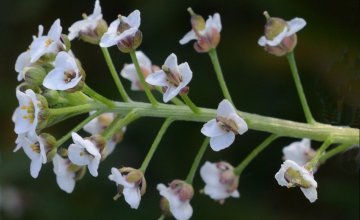How to eat enough folic acid from foods during pregnancy
Diet rich in folic acid in pregnancy and lactation – Importance of folic acid in pregnancy
If you are pregnant or thinking about a pregnancy, your doctor may have recommended eating green vegetables for their contribution in folic acid (vitamin B9). This vitamin is very important in pregnancy because it is needed for the multiplication of the cells and therefore for the formation of the fetus.
 Photo of Brussels sprouts. Green vegetables have a very high content of folic acid. In contrast, meats, fish and dairy products contain little folic acid
Photo of Brussels sprouts. Green vegetables have a very high content of folic acid. In contrast, meats, fish and dairy products contain little folic acid
Adequate levels of folic acid allow the cells to divide, grow and maintain correctly, something necessary for the proper growth of the fetus and also for the good health of the future mother.
For this reason folic acid is necessary in all stages, from conception, during pregnancy, and in lactation, so that the baby develops properly.
What happens if you do not eat enough? Folic acid deficit
It has been proven that the deficiency of folic acid is responsible for the appearance of fetal malformations in the neural tube of the baby, such as spina bifida (disease characterized by having the spine unprotected as the closure of the vertebrae has not occurred around it) or other diseases of the brain or nervous system.
For these reasons, gynecologists always recommend pregnant women to eat foods with a lot of folic acid, such as broccoli, avocado, legumes and nuts: A wise nutritional advice that should not be overlooked.
How much folic acid is recommended during pregnancy?
During pregnancy, about 600 mcg of folic acid is recommended daily.
Even if you are not pregnant, but you are thinking about becoming pregnant, it is also important to consume a lot of folic acid. During the first weeks after conception is when there is greater growth of the future fetus, therefore much folic acid is required.
Foods rich in folic acid during pregnancy
The richest foods in folic acid are the vegetables of intense green color. They present a very high content in this vitamin: asparagus, artichokes, beet, spinach, okras, chayotes, Brussels sprouts, etc.
Women who do not like vegetables should consider eating them if they are pregnant. One way would be through green juices, for example, crushing an apple with a little celery and spinach.
Avocado is very rich in folic acid
Avocado is the richest fruit in folic acid. It can be eaten whole or in homemade guacamole sauce. An entire avocado provides both folic acid and 1 vegetable dish. Other fruits rich in this vitamin are: durian, guava, mango, blueberries, raspberries, strawberries, orange, papaya, kiwi, etc.
Seeds and nuts are also very rich in this vitamin, especially sunflower seeds, walnuts, tahini, sesame, hazelnuts, hazelnut cream, etc.
Other foods very rich in folic acid are legumes (lentils, chickpeas, beans, lupins, peas, etc.), although their content is diminished during the long cooking.
Cereals also contain folic acid, especially whole grains, such as oat flakes, quinoa, brown rice, etc.
* Related information:
![]() More information on vitamins.
More information on vitamins.
| Vitamin B1 (Thiamin) | Vitamin B2 (Riboflavin) | Vitamin B3 (Niacin) |
| Vitamin B5 (Pantothenic acid) | Vitamin B6 (Pyridoxine) | Vitamin B7 (Biotin) |
| Vitamin B9 (Folic acid) | Vitamin B12 (Cobalamin) | Choline |
| Inositol | PABA | Lipoic acid |
![]() More information about vitamins.
More information about vitamins.








